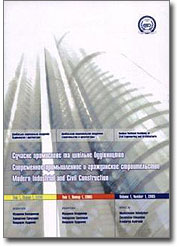The Paradigm of Urban Planning in Central Asia of the pre-Islamic Period
Abstract: The pre-Islamic period (V–VIII centuries) in Central Asia, unlike Europe, was characterized by an urban planning «boom». Trading cities were rapidly emerging, growing and developing on the routes of international caravan trade and in places of mining. The Great Silk Road stimulated the emergence of new cities, connected and established political, trade and cultural relations between countries. The study determines the nature of urban planning in the pre-Islamic period in Central Asia and notes the continuity of the traditions of antiquity in the early Middle Ages. The characteristics and definition of the main structural parts of the city are given, as well as the main prerequisites and reasons for the emergence of cities in the period under consideration are formulated. The general and distinctive features of the planning that characterize cities with a predominance of nomadic or agricultural culture are revealed.
Keywords: urban planning, early Middle Ages, citadel, Shahristan city, Rabad, Rabat – caravanserai, Кoshk – feudal castle.
Pages: 135-145.
For citation:
For citation: Volichenko, O. V.; Kariev, B. S. The Paradigm of Urban Planning in Central Asia of the pre-Islamic Period. – Text : electronic. – In: <em>Modern Industrial and Civil Construction</em>. – 2021. – Vol. 17, N 3. – Р. 135-145. – URL: https://donnasa.ru/publish_house/journals/spgs/2021-3/01_volichenko_kariev.pdf (date of access: 22.12.2024). – ISSN 1993-3495.

Vol. 17, N 3 (2021)
Journal: Modern Industrial and Civil Construction
Publish house: Donbas National Academy of Civil Engineering and Architecture
Journal: Modern Industrial and Civil Construction
Publish house: Donbas National Academy of Civil Engineering and Architecture
